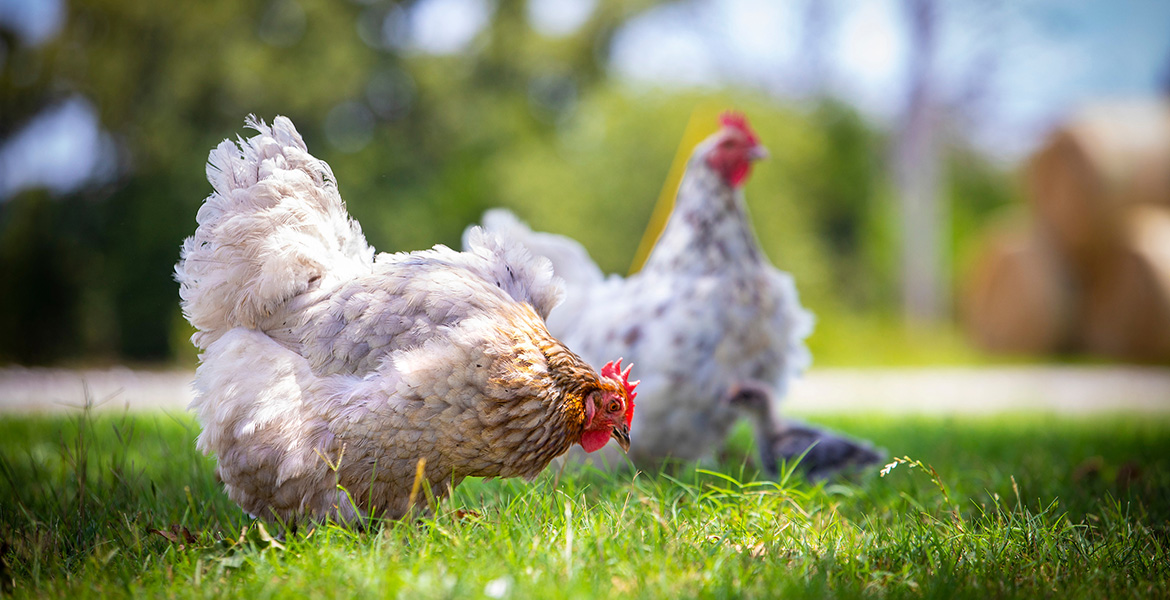
Water management key to helping chickens beat the heat
Friday, July 10, 2020
Four water management tools can help protect a backyard poultry operator’s investment by improving animal survival rates during hot summertime temperatures.
“Birds do not sweat so water management is a practical and very important way to help chickens combat heat stress,” said Josh Campbell, Oklahoma State University Extension agricultural educator for Oklahoma County. “These methods may increase litter moisture so chicken producers should monitor conditions for maximum evaporation.”
Three of the management tools are easy to employ while the fourth – adding electrolytes – should only be used in emergencies:
- Cool poultry’s drinking water, preferably to about 50 degrees Fahrenheit. Numerous research projects indicated birds drinking cool water can lower their body temperature by as much a 1½ degrees, and significantly increase feed consumption, weight gain and survival rates.
- Forcing chickens to walk around can increase their consumption of cool water by up to 8%.
- Increased air flow also helps cool the birds. Circulation fans can lower poultry house temperatures by 8 degrees.
- Heat stress can throw off the electrolyte balance in the body and so a water-soluble electrolyte could be offered to help correct the imbalance.
“Commercially available electrolytes should be mixed according to label instructions and offered only in potentially high-stress situations,” said Dana Zook, OSU Extension area livestock specialist for western Oklahoma. “Do not add more than the manufacturer recommends as this may stop the chickens from drinking.”
Generally, chickens start to experience heat stress at about 85 degrees Fahrenheit. Some chicken breeds and individual birds are more prone to heat stress than others. Larger, heavier breeds with dark feathers and small combs like Wyandottes and Cochins may suffer more in the heat. The larger combs and wattles of smaller breeds like leghorns help them tolerate heat better.
“Humidity, ventilation and access to shade all affect the level of heat stress, so monitoring your birds is the best way to ensure they are alright.,” said Brad Secraw, Cleveland County Extension agricultural educator. “Digestion creates heat so feeding chickens in the evening may help keep them cool.”
Signs of heat stress include:
- Chickens often will slow down or stop laying eggs.
- Poultry will pant like a dog.
- Birds hold wings out from their bodies and crouch slightly in order to dissipate heat.
Other tips for cooling chickens include letting the birds interact with ice blocks or frozen water bottles and jugs. Adding ice cubes is an easy way to cool down drinking water. Provide a shallow pan of water and let the birds wade in it, just be sure to clean the pan daily to prevent possible disease issues.
"You can use frozen vegetables and fruits like watermelon as cool treats but make sure they’re no more than 10% of the birds’ daily diet,” Secraw said. “Their feed intake will already be reduced. Care must be taken to not cause further dietary imbalances with too many treats.”
Effective heat stress management revolves around thermobalance – optimum bird performance achieved through equilibrium of heat produced and heat given out by the chicken. There are a number of ways to achieve thermobalance but water management is among the easiest to employ.
Consult OSU Extension fact sheets for more practical tips about managing a backyard poultry operation, available online and through all county Extension offices.
MEDIA CONTACT: Donald Stotts | Agricultural Communications Services | 405-744-4079 | donald.stotts@okstate.edu
